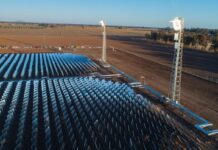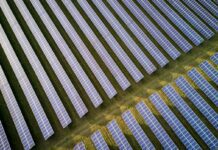
Lower electric costs for customers and more reliable sustainable energy could be some of the benefits of a new study by the University of Adelaide researchers who investigated how predictable solar or wind energy generation is and its impact on electricity market income.
In order to reduce operational expenses by millions of dollars, PhD candidate Sahand Karimi-Arpanahi and Dr Ali Pourmousavi Kani, senior lecturer from the university’s School of Electrical and Mechanical Engineering, explored various strategies for obtaining more reliable renewable energy.
The study, published in the data science journal Patterns, analysed six existing solar farms in New South Wales and identified up to nine alternative sites, comparing the sites based on the present analytic parameters and when the predictability element was also taken into account.
The data indicated that the optimal location changed when the predictability of energy generation was considered, resulting in a significant increase in the site’s potential revenue.
“One of the biggest challenges in the renewable energy sector is being able to reliably predict the amount of power generated,” said Karimi-Arpanahi.
He added that owners of solar and wind farms sell their energy to the market ahead of time before it is generated; however, there are significant penalties if they do not produce what they promise, which can amount to millions of dollars annually.
“Peaks and troughs are the reality of this form of power generation, however using predictability of energy generation as part of the decision to locate a solar or wind farm means that we can minimise supply fluctuations and better plan for them,” the PhD candidate added.
According to Dr Pourmousavi Kani, the findings of the study will be important for the energy business in designing new solar and wind farms as well as public policy design.
“Researchers and practitioners in the energy sector have often overlooked this aspect, but hopefully our study will lead to change in the industry, better returns for investors, and lower prices for the customer,” he said.
From August to October of every year, Dr Kani said that SA has the lowest solar energy generation predictability, whereas NSW has the most during that time.
“In the event of proper interconnection between the two states, the more predictable power from NSW could be used to manage the higher uncertainties in the SA power grid during that time,” he noted.
The researchers’ analysis of fluctuations in solar farm energy output could be applied to various uses in the energy business, the study revealed.
Dr Kani concluded that when renewable resources have lower predictability, the average predictability of renewable generation in each state can help power system operators and market participants determine the time frame for annual maintenance of their assets, ensuring the availability of enough reserve requirements.



















